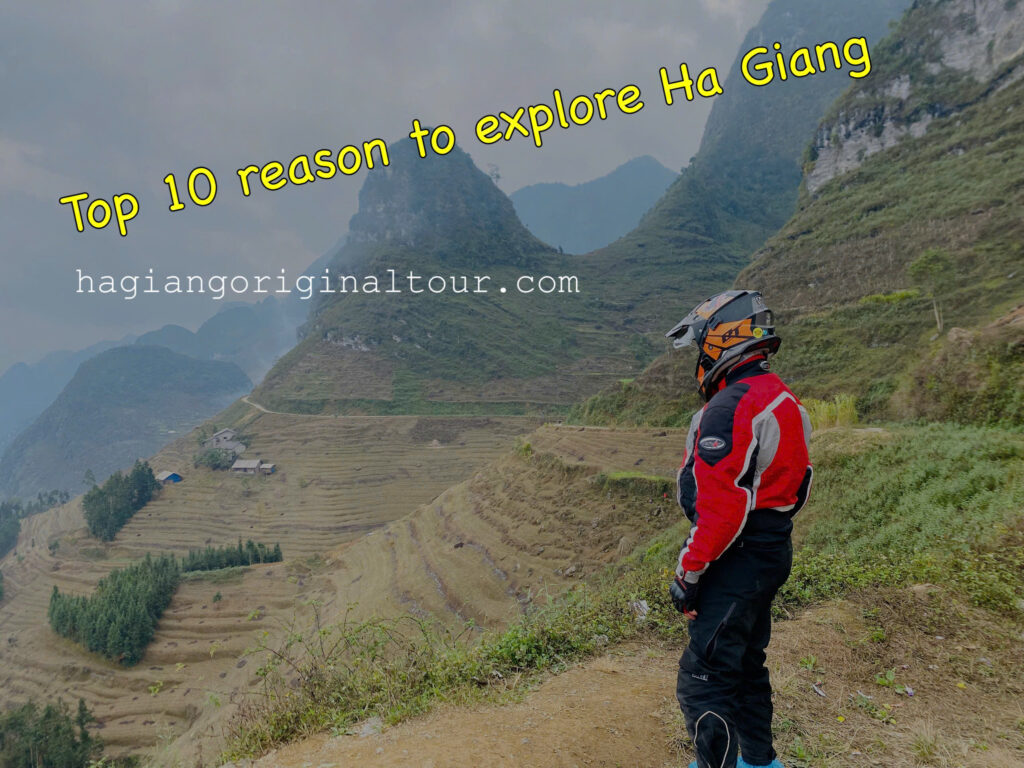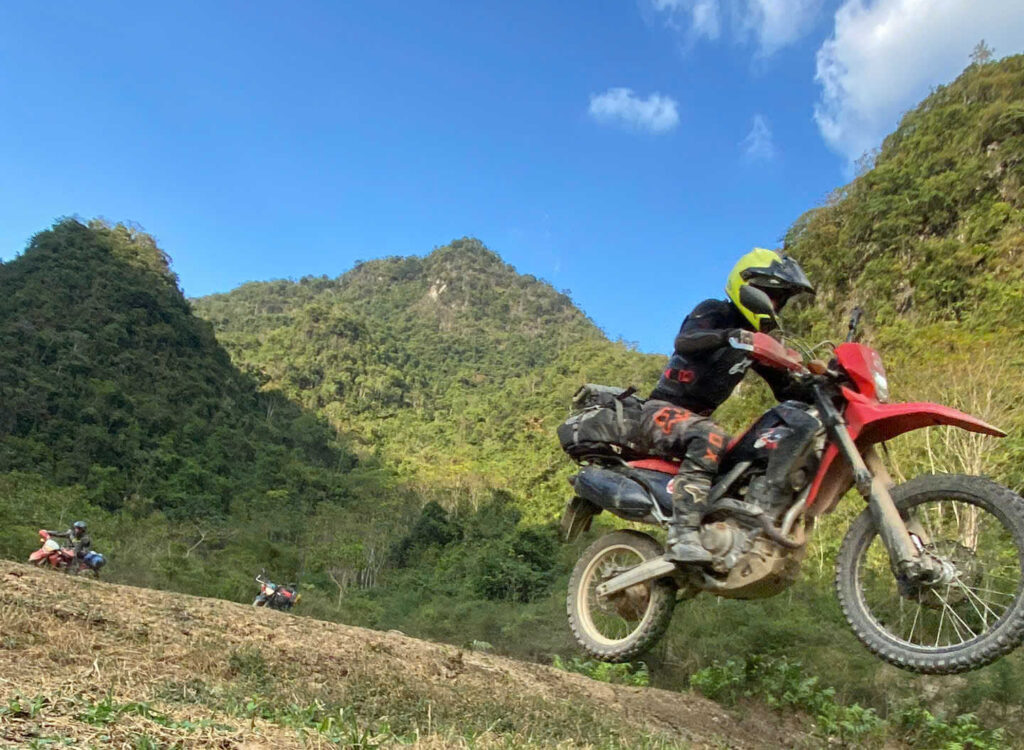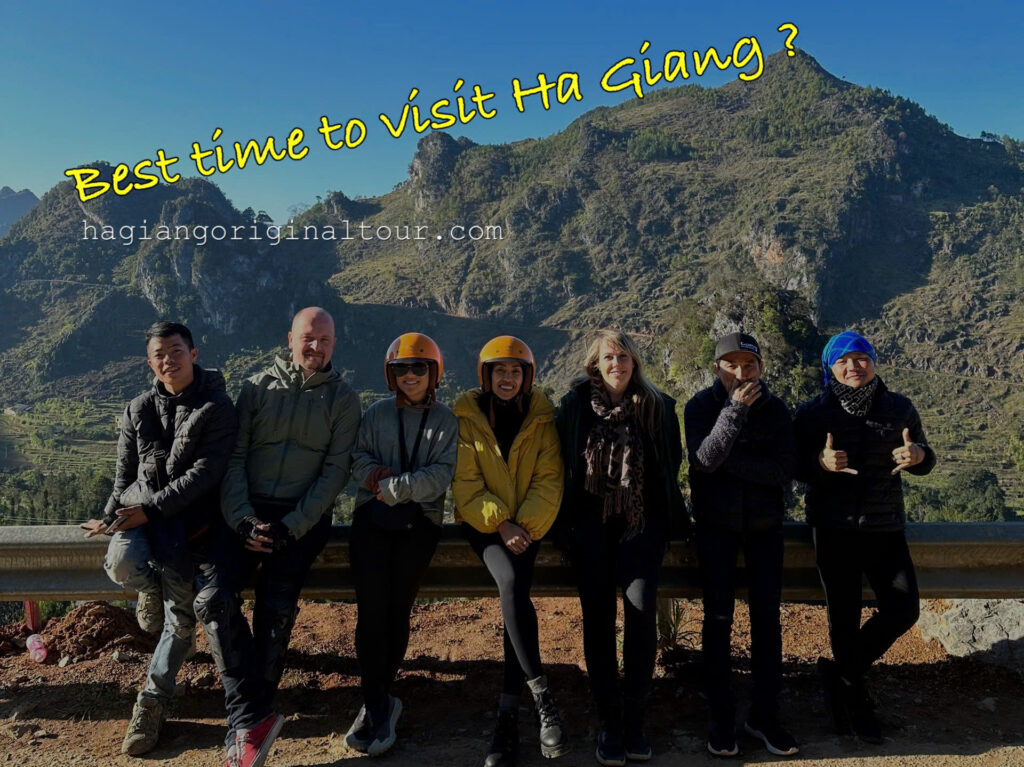Top 10 Reasons to Explore the Ha Giang Loop in Northern Vietnam

Top 10 Reasons to Explore the Ha Giang Loop
Tucked away in the far northern reaches of Vietnam, Ha Giang remains one of Southeast Asia’s best-kept secrets. This rugged province offers an unforgettable journey through some of the country’s most breathtaking landscapes and authentic cultural experiences.
The Ha Giang Loop, a circular route passing through stunning mountain passes, ethnic minority villages, and remote valleys, is the ultimate motorbike adventure for those seeking the road less traveled.
1. Spectacular Mountain Landscapes
The Ha Giang Loop winds through dramatic scenery: towering limestone peaks, winding mountain roads, and lush terraced rice fields. Each turn reveals a new postcard-perfect view, especially during sunrise or sunset. No matter the season, Ha Giang’s landscapes are nothing short of breathtaking.
2. Ma Pi Leng Pass – The King of Vietnam’s Mountain Roads
Often referred to as one of Vietnam’s “Four Great Passes,” Ma Pi Leng is an iconic mountain road perched high above the Nho Que River. This stretch of highway offers panoramic views of deep valleys and vertical cliffs. Riding or standing at the Ma Pi Leng Skywalk viewpoint is an unforgettable moment for any traveler.
3. Nho Que River and Tu San Canyon – Nature’s Masterpiece
From Ma Pi Leng, you can descend to the emerald waters of the Nho Que River, where you’ll board a boat to explore Tu San Canyon – the deepest canyon in Southeast Asia. The vertical cliffs towering on both sides of the river make this a surreal and humbling experience in the heart of nature.
4. Hoang Su Phi Rice Terraces – A Photographer’s Dream
Located in the western part of Ha Giang, the rice terraces of Hoang Su Phi are among the most impressive in Vietnam. Visit in late September or early October to witness the golden harvest season, when the landscape glows in waves of gold and green. The best part? You’ll often have the view all to yourself.
5. Dong Van Karst Plateau – UNESCO Global Geopark
The Dong Van Karst Plateau is a wonder of geology, culture, and history. Recognized by UNESCO, this vast area is home to dramatic rock formations formed over millions of years. You’ll also find traditional hill tribe villages and hidden historical sites scattered throughout the rocky terrain.

6. Rich Ethnic Minority Culture
Over 20 ethnic groups live in Ha Giang, including the H’mong, Tay, Dao, and Lo Lo. Visiting local villages and markets offers a glimpse into their way of life—colorful traditional clothing, handmade crafts, and unique languages and customs. Joining a homestay lets you connect directly with these communities.
7. Local Cuisine Full of Character
The food in Ha Giang is rustic, hearty, and often made with ingredients straight from the garden or forest. Try local specialties such as thang co (a traditional H’mong stew), cháo ấu tẩu (a warming porridge), grilled pork skewers, sticky rice, and corn wine. Meals are often enjoyed family-style with your hosts.
8. Charming Old Towns and Traditional Villages
Stroll through the narrow streets of Dong Van Old Quarter, with its blend of Vietnamese, Chinese, and H’mong architecture. Visit Pho Cao or Lung Cam Village to see earthen-wall houses, stone fences, and everyday rural life. These places feel untouched by time.
9. Lung Cu Flag Tower – Stand at Vietnam’s Northernmost Point
Lung Cu is a national landmark marking the northern tip of Vietnam. Climb to the top of the flag tower for a sweeping view over the border and the surrounding villages. It’s not only a scenic spot but also a symbol of Vietnamese pride.
10. Peaceful Escape from City Life
Ha Giang offers a tranquil retreat from the hustle and noise of urban life. Here, time seems to slow down. You’ll wake up to birdsong, ride through misty valleys, and spend your evenings under the stars. It’s a place to reconnect—with nature, with others, and with yourself.
Final Thoughts
The Ha Giang Loop is more than just a motorbike trip—it’s an experience that touches your senses, challenges your limits, and opens your heart. Whether you choose to ride yourself or join an easy rider tour, this is an adventure you’ll remember for a lifetime.
Discover landscapes that defy imagination and meet people whose warmth and resilience will inspire you. Come before the rest of the world catches on—Ha Giang is calling.
Also planning to visit Sapa after Ha Giang? Take a look at our Sapa tours here.
Got questions or need help with planning? Contact us, we’re happy to help!

